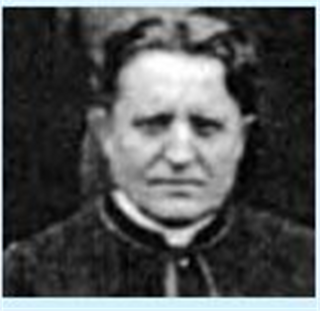Leonhard Steinwender

Personalia
Born:
Died:
Profession:
Persecution:
Imprisonment 12.03.1938,
Imprisonment 19.04.1938 - 10.11.1938,
Buchenwald concentration camp 10.11.1938 - 16.11.1940
KZ Number:
Memberships
Curriculum Vitae
Leonhard Steinwender attended the Archbishop's Borromäum in Salzburg and studied theology after graduating from high school in 1908. After completing his theological training, he was ordained a priest in 1912 by Salzburg Archbishop Johannes Cardinal Katschthaler (1900-1914). He then initially worked as a cooperator in Brixlegg/Tyrol - here also as president of the Catholic Boys' Association - and then in Nonntal in 1915. In 1924, he joined the student fraternity Austria Wien.
He was active in the Christian Social Party, the dominant political force in Salzburg after the First World War. From 1917 to 1938, he was editor-in-chief of the "Salzburger Chronik", in which he advocated an anti-national socialist course from the outset. He also promoted the Christian-German gymnastics movement and, as an official of the Salzburger Turnerschaft [now Sportunion], initiated its new foundations as a counterweight to the German-ethnic clubs. In 1927, he was elected canon in the Mattsee collegiate monastery (Canonicus externus sine praebenda) and in 1937 was appointed vicar of the militia.
As a talented speaker, he also appeared at church and political events in the German Reich, including the 71st German Catholic Congress in Essen in 1932. In 1934, he was appointed head of publicity at the VF regional management in Salzburg, where he was responsible for the training and press department. In 1935, the vigilance of a postal worker prevented an attempted letter bomb attack that was to hit Archbishop Sigismund Waitz and Leonhard Steinwender, among others. On March 11, 1938, his last editorial appeared in the "Salzburger Chronik": "Bahn frei - Österreich!"
On the night of the Anschluss, he was forcibly dragged out of his apartment and taken into custody, but was released from "protective custody" shortly afterwards. He was arrested again on April 19, 1938 and, after seven months in Gestapo custody in Salzburg, was transferred to Buchenwald concentration camp on November 10, 1938 on the orders of the Gestapo in Berlin. Here, as a priest, he was segregated from the other prisoners so that he could not make contact with them. Despite the many spies and "eavesdroppers" in the camp, he managed to form religious circles in secret, initially among well-known compatriots and like-minded people.
The camp rules and the daily work schedule make any religious gatherings difficult. Only Sundays and major holidays such as Christmas and Easter remain. Out of harassment, however, "voluntary work" was assigned on Sundays.
After more than two years, Leonhard Steinwender was released on November 16, 1940. He was banned from Salzburg and then went to Petting near Lake Waginger See in Upper Bavaria as a vicar from 1940 to 1945. In addition to his pastoral work, he teaches in the elementary school and helps the farmers with the harvest work. The Gestapo in Munich lists him as Enemy of the State A because of his political activities. Here in Petting, he experiences the end of the war.
I want to attempt to portray religious life in the concentration camp, to follow the traces of grace that gave believers a mysterious strength in the hardest years of their lives.
After the war, Leonhard Steinwender returned to his old functions. The Archbishop of Salzburg Andreas Rohracher
Citations
Krause, Peter/Reinelt, Herbert/Schmitt, Helmut (2020): Farbe tragen, Farbe bekennen. Katholische Korporierte in Widerstand und Verfolgung. Teil 2. Kuhl, Manfred (ÖVfStG, Wien) S. 341/342.
